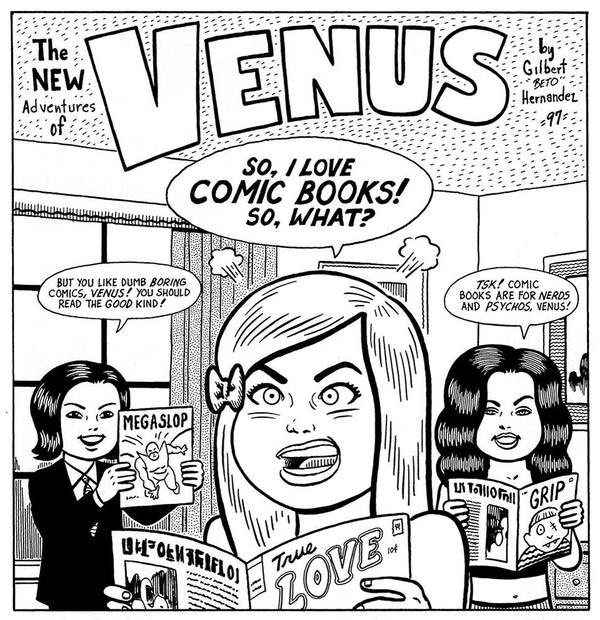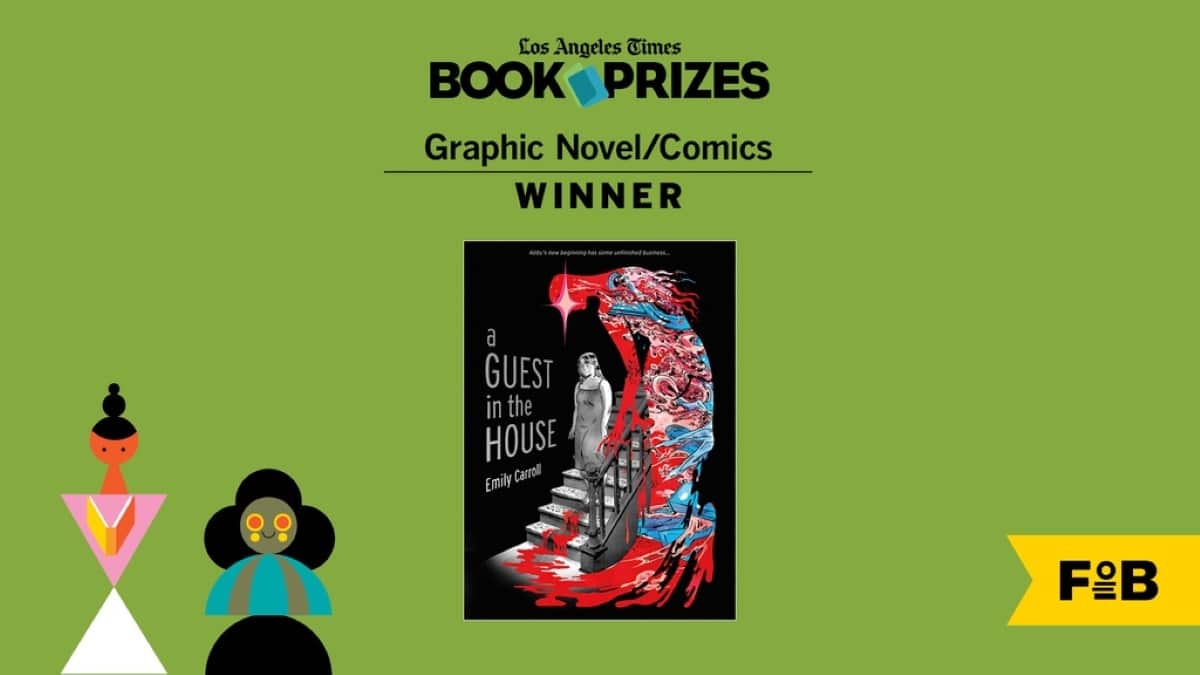Former retailer and current CBLDF director Alex Cox pens a piece called How I Learned To Stop Worrying and Ignore the Internet with a quick look back at the last ten years of online comics discourse…and how it doesn’t really affect actual consumers that much:
But mostly the REALITY of making, selling, and working with comics took precedence over the bizarre parallel universe of the comics internet. When I owned my shop, and previous to that, when I worked in another high-traffic NYC store, I straw-polled customers from time to time, and found that an astonishingly low number of them spent any time reading about comics online. And even fewer still actively participated in any sorts of discussions. The percent that did read the comics internet was divided further by the percent that used it as anything past a casual scroll. I realized that the numbers of comics sold were not reflected in the amount of online chatter about any given comic, and vice versa. In other words, if two worlds existed of comic fans, the people shopping every Wednesday and the people on twitter all night, the twain were not necessarily meeting. There is a great value in sites like CBR, and the myriad of other news outlets, but too often people convince themselves that comics begin and end on tumblr, and the world is a much bigger place than that.
While I don’t doubt that Cox is correct with the vast majority of readers being immune to the passionate arguments on ComicsSpecialSauce.com, it’s also true that social media enables creators who are good at it to capture and hold a fanbase. I’d point to Matt Fraction and KellySue DeConnick as two of the best, and certainly Chip Zdarsky, Fraction Sex Criminal co-conspirator, as models of this. It’s not entirely clear how much of their audience came for the social media inetraction, but it’s a good bet that some STAY for the brimping and Carol Corps.
BUT MEANWHILE, there is still good writing about comics on the internet, against all odds. Steve Morris, no stranger to good writing himself, has rounded up some examples in The Best Comics Commentary of 2014 with nods to David Harper, Zainab Akhtar, Paul O’Brien, Robin McConnell, Claire Napier and many more. Just head over and click the links and do exactly what they say.








So I guess those thousands of online columns I’ve written have been for nothing? Shit. I should have pursued my dream job of being an elf at the North Pole. I had the curled shoes and everything.
Big Bang Theory gets higher ratings than Mad Men, too. Different strokes for different folks.
Much of his article is a classic trope, creating an ad hominem to rail against and acting as though all outrage is equally vicious or equally silly.
This article is so on-point , with what we see at our store. We have 500+ readers/buyers on our store’s reserve. 80% of the people on the reserve really do not pay any , and I do mean any , attention to The Beat , CBR , BC , Newsrama , the DC / Marvel / Publisher sites , etc. About 10% give a quick look once in a while. The other 10% seem to use the net daily for comic news , reviews , etc.
Truthfully , we do a lot of “hand-holding” with our customers , pointing them in the direction of what they may be interested in. And again truthfully , this is one of the best parts of our job.
Not a better feeling in the world , then pointing out a comic or trade they may be interested in and having the customer add the title to his reserve (or buy back issues , or additional trades , etc).
You would think that the way the ‘net reacted to Civil War , One More Day , the new 52 , and on and on , that people hated this stuff. But our Amazing Spidey sales are still 4X what they were pre-OMD , and our overall DC Sales are still up about 40-50% (varies a little , each month ) pre-New 52.
One other thing , I want to add and Heidi (and associates ) , Hibbs , etc have pointed this out time and time again, Cover design/art is so-o-o-o-o important for all publishers , especially with new titles , relaunches , etc . With the number of new titles each Wens. , make it count , make a potential buyer/reader pull it out of the rack. Grab the attention of the 80% that are being exposed to your title in the store for the 1st time. This is also very important (and seems to be forgotten for trades ) when you want someone to part with $15 to $50+ for a trade . Make them want to read the book!!
Get a life, asshole.
Thanks, Ali, you covered pretty much what we did at the store, talking about this this article last evening. Alex is right on with the day-to-day reality of selling comics — the activity of online comic reviewers/discussers is not representative of who we see in the comic shop.
(And the covers? Can we add in, “make sure your logo is big and prominent in the top third of the page”?)
Our customers, many are reading about comics on the internet. Seems that it’s in a more general sense, following what’s getting buzz and good reception, trying to keep track with everything that’s out there. Maybe some boards or forums following their specific interests.
Don’t get me wrong. Writing about comics is important, the internet is the venue. A high level of discourse will keep the medium moving forward. Just don’t fall into the trap of thinking that what’s happening on the web is a reflection of what’s happening in the physical world.
The reality — no, seriously last night — explaining how there can be multiple volumes 1 of Deadpool; the “hand-holding” Ali is so right about (and not complaining, that’s the role of a bookseller).
My comment was not directed towards Ali, though it looks that way now.
Been reading for 20+ years and i’ve never read a review or a solicit of a comic book in my life (never pre-ordered either…its not how i want to buy things). I don’t really even know where to find comic book reviews. I only casually skim through comics site headlines and don’t read most of the articles to get a little bit of current news. I buy things that look cool (flipping through covers and interiors) and that my friends highly recommend. I stay the hell away from the fanboy outrage-versations because i have other things going on in my life, and who has time for that? I’d rather read comics than read opinions about them. If i like something i get more of it. If i don’t like it, i stop buying it. This is my secret to not hating comics and keeping things fun.
I’d like to add a bit more to Ali’s comment on cover design. Cover design is as important as the story itself. In the growing traditional book store market, it is critical and needs to match the artwork on the inside. Variants do serve a purpose in the direct market but not much beyond that. As for Bram’s comment about placing your logo on the top third of the page? If you are talking about the title of the book then yes, that is effective. Make sure it’s in a font that is clearly visible from 6-8 feet away on the book display. Keep the images on the cover simple-maybe a single character. Too many images create a visual clutter.
For the publisher logo, put that on the spine if you must have it visible but save the cover for promoting the story. If you look at books like Harry Potter(Scholastic) DaVinci Code(Random House) you wont see the publisher’s logo because it doesnt help to sell the books. Study what the traditional houses do for marketing their books and steal everything you can. It’s time for comics publishers to compete on a much bigger playing field.
I do think that websites like The Beat, CBR, Comics Journal, etc have an important role in the universal comics conversation and social media is a great tool for creators to use in self promotion. It’s that we also get comments from ‘the crazies’ as a part of the package. They dont help to sell the books but they do keep it interesting and entertaining.
@John — oh, yeah, totally, I meant the comic’s logo. New Avengers, I’m looking at you.
I think the reality of not just standing out, even being noticeable in a retail (virtual or brick-and-mortar) environment is getting lost. Even favorites by talented people make that mistake; had to make a special sign for Pretty Deadly, it kept getting overlooked.
There was a beautiful moment at the shop, when all three of the new Doctor Whos where out and in line on a rack — strong, legible logos and the head of each doctor placed high enough to make it perfectly clear what you were looking at.
Comments are closed.